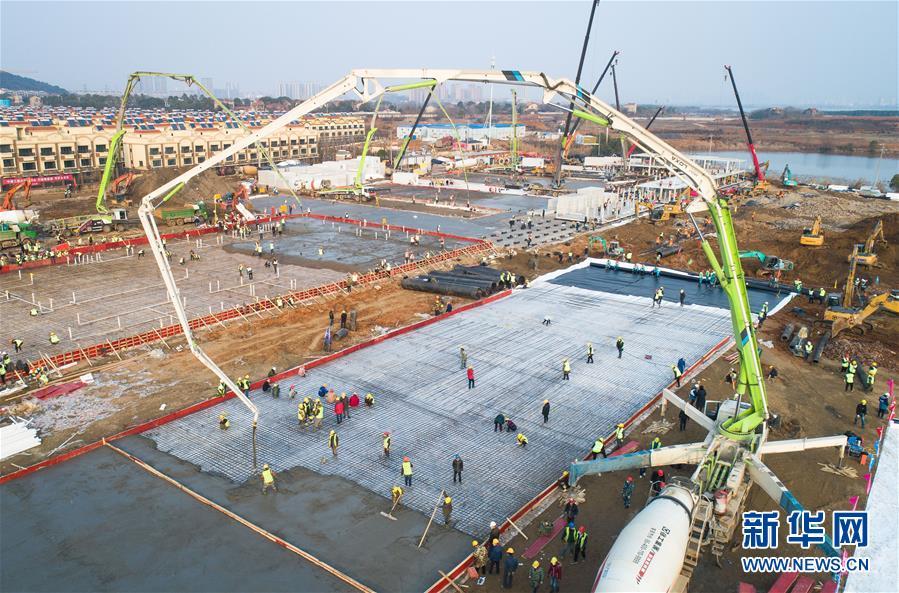BEIJING, April 7 (Xinhua) -- A Chinese team has published their research on makeshift hospitals, highlighting the large-scale temporary hospital's significance in the national response to the COVID-19 outbreak as well as future epidemics and public health emergencies.
The makeshift hospitals (Fangcang in Chinese) are "large, temporary hospitals built by converting public venues, such as stadiums and exhibition centers, into health-care facilities to isolate patients with mild to moderate symptoms of an infectious disease from their families and communities, while providing medical care, disease monitoring, food, shelter and social activities," said the paper published on the journal The Lancet.
The researchers explained why Chinese policy makers decided against home isolation of COVID-19 patients with mild to moderate symptoms.
Early epidemiological evidence showed that more than half of COVID-19 patients in China had at least one family member with the disease, and 75 percent to 80 percent of clustered infections were within families.
Meanwhile, home isolation can be taxing for patients and the practice may not be strictly enforced. In addition, it is difficult to monitor disease progression at home.
Statistics showed that before the introduction of makeshift hospitals in Wuhan, the time from onset of severe symptoms to admission for intensive care was up to 10 days. The makeshift hospitals have substantially reduced the delays.
The researchers said that the makeshift hospitals have three distinct characteristics --rapid construction, massive scale and low cost -- and several functions that set them apart from facilities that have been previously used for the control of public health emergencies.
They pointed out that makeshift hospitals served an important triage function, separating patients by severity of symptoms, which was not a focus of previous makeshift and emergency field hospitals
The makeshift hospitals also became a national standard of care, rather than a temporary, emergency measure to bridge a gap until improved capacity for large-scale treatment became available.
Meanwhile, they were not only healthcare facilities, but also served as social spaces, providing essential living, emotional support and social engagement for patients away from their families and communities.
A total of 16 makeshift hospitals were built in Wuhan with 13,000 beds over a period of three weeks, providing care to about 12,000 patients by March 10.
They also freed up the scarce medical infrastructure of higher-level hospitals, such as units providing respiratory support and intensive care, increasing the overall efficiency of care.
In Wuhan, the bed vacancy rate in traditional hospitals designated for the care of COVID-19 patients increased from 4 percent on Feb. 4 to 16 percent on Feb. 22, when 16 makeshift hospitals had started admitting patients.
The paper said that China has translated all policies, management manuals and clinical guidelines related to makeshift hospitals into the languages of countries facing rapidly growing COVID-19 outbreaks.
China has also sent experts with direct experience in constructing and running makeshift hospitals to other countries to provide consultation.




 A single purchase
A single purchase









